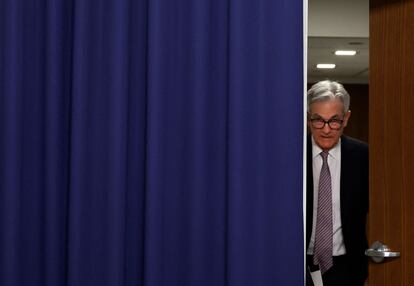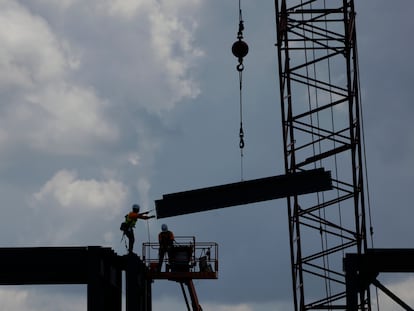How come the recession is delayed and the stock markets are rallying?
The monetary policy impact has been extremely slow due to the low cost of debt in recent years, which is propping up the so-called ‘zombie’ companies

As the transmission of monetary policy has been moving slowly owing to the extremely low cost of fixed-rate debt accrued over the last 10 years, numerous zombie companies have been able to survive.
One of the most eye-catching things about the current process of interest rate increases initiated in the U.S. 14 months ago and in the eurozone almost 12 months back is the disconnect between the economy and stock market sentiment. This is compounded by the somewhat explicit intentions of the Federal Reserve and the European Central Bank (ECB).
It is also quite remarkable to observe that, on the same day (last Friday), the financial futures market went from projecting a 40% probability of an interest rate rise for the month of June in the morning to a 20% likelihood in the afternoon. If the former was contributed to by the generally hard-hitting comments made by a number of members of the Federal Reserve, the latter was the result of remarks made by its chair, Jerome Powell, for whom the instability of the regional banking system means that it would be ill-advised to raise interest rates immediately.
To further complicate matters, the same financial futures market that on Friday morning forecast a rise in the Federal Funds rate (the benchmark for the overnight interbank market) in June, indicated that the same rates would fall in July. Such a swing would not have been seen since Jean Claude Trichet raised ECB interest rates in July 2008 only to be forced to lower them in October. Trichet repeated the gamble in the spring-summer of 2011, by raising them twice, and it was Mario Draghi who then had to lower them in November of the same year.
There could only be one explanation for such a drastic turnaround by the Federal Reserve. This is that, in July, the U.S. economy was in a deep recession and there was no alternative but to lower interest rates, after the mistake of raising them in June, when the recession had not yet become manifest.
However, this level of precision in market expectations is difficult to achieve. Rather, it all seems to stem from the determination on the part of those who operate in the financial markets and stock exchanges to see that their wishful thinking materializes as soon as possible. This is something that they will end up accomplishing formally and that they have already achieved in practice: the stock markets have been climbing since October 2022, despite rising interest rates.
At the start of the summer of 2022, a phrase that said it all began to circulate: “The Federal Reserve is going to pivot.” In other words, to affect a turnaround in its interest rate hike policy, which basically meant that the rate increases were about to come to an end. Ever since those first wishes in June 2022, interest rates have jumped an additional 3.5% in the U.S., but this constant divergence between reality and expectations has not prevented them from holding up and since October it has enabled the U.S. stock markets to recover half of what they lost in the first nine months of 2022.
Consequently, for almost 12 months now, the stock markets have been opposing the Federal Reserve’s intentions, without receiving the corrective action they deserve, in accordance with the well-known saying “don’t fight the Fed.”
How can this be possible? There is only one explanation, which is a blend of two arguments. Firstly, liquidity in the U.S. money markets has recovered from a 40% decline in the previous nine months since October last year. Secondly, just as consumers have largely handled the rise in the prices of products and services and the cost of mortgages on account of the savings amassed during the pandemic, companies are also weathering the increase in costs. This is because the average cost of their accumulated fixed-rate debt is significantly lower, given that this borrowing took place during the years when interest rates were close to zero.
This is best illustrated by the fact that the average cost of U.S. public debt in 2021 was only at 1.60% (today it is 2.10%). As a contrast, consider that (according to Pew Research) in 1988 this average cost was at 8.8% and at the beginning of the 2008 financial crisis, it was still at 5%.
Another equivalent reduction in the average cost will hit companies, meaning that the stock markets are locked in behind this scenario, just as consumers are entrenched behind the savings accumulated by the paychecks they received in 2020 and 2021. As a result, the effect of monetary policy is taking considerably longer than usual to materialize.
What are the consequences? Inflation in services will resist declining and the Federal Reserve will be forced to raise interest rates more than anticipated, thereby increasing the risk of an overshot. That is, until the economy and the stock markets buckle.
Sign up for our weekly newsletter to get more English-language news coverage from EL PAÍS USA Edition
Tu suscripción se está usando en otro dispositivo
¿Quieres añadir otro usuario a tu suscripción?
Si continúas leyendo en este dispositivo, no se podrá leer en el otro.
FlechaTu suscripción se está usando en otro dispositivo y solo puedes acceder a EL PAÍS desde un dispositivo a la vez.
Si quieres compartir tu cuenta, cambia tu suscripción a la modalidad Premium, así podrás añadir otro usuario. Cada uno accederá con su propia cuenta de email, lo que os permitirá personalizar vuestra experiencia en EL PAÍS.
¿Tienes una suscripción de empresa? Accede aquí para contratar más cuentas.
En el caso de no saber quién está usando tu cuenta, te recomendamos cambiar tu contraseña aquí.
Si decides continuar compartiendo tu cuenta, este mensaje se mostrará en tu dispositivo y en el de la otra persona que está usando tu cuenta de forma indefinida, afectando a tu experiencia de lectura. Puedes consultar aquí los términos y condiciones de la suscripción digital.
More information
Archived In
Últimas noticias
Most viewed
- Sinaloa Cartel war is taking its toll on Los Chapitos
- Oona Chaplin: ‘I told James Cameron that I was living in a treehouse and starting a permaculture project with a friend’
- Reinhard Genzel, Nobel laureate in physics: ‘One-minute videos will never give you the truth’
- Why the price of coffee has skyrocketed: from Brazilian plantations to specialty coffee houses
- Silver prices are going crazy: This is what’s fueling the rally










































